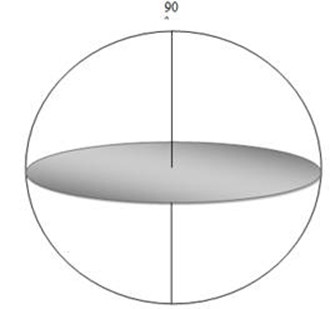THE CHORD PROPERTIES OF A CIRCLE
The chord of a circle is the line segment whose end point are on the circle. A chord which passes through the centre of a circle is called a diameter. It is very important for you to know what a chord is and how to identify the chord properties of a circle because it will summarize you with this unit.
Therefore in this section you are going to study about the chord itself and the chord properties of a circle.
You are also going to study how to develop theorem which relate to these properties at chord. At the end of the section you will be able to identify the chord, prove the theorem of the chord. Properties in a circle and then apply these theorems on solving related problems in order to identify the properties of the chord properties it easier if you draw a circle with centre O.
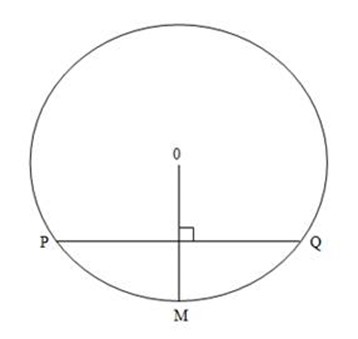
You can see that O is a centre of the OM is the radius of the circle and PQ is chord of the circle.
Therefore you will discover that.
(a) The centre of the circle lies on the perpendicular bisector of the chord.
(b) The perpendicular from the centre of the circle to the chord
(c) The line joining the centre of the circle to the midpoint of the chord.
Then from the information above you can develop the theorem which can be written as;
THEOREM
The perpendicular bisector of a chord passes through the centre of the circle.
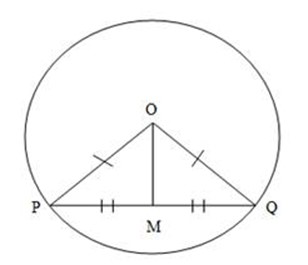
AIM: To prove that OMP = OMQ = 90o
Construction: Join OP, OQ and OM
Proof:
(i) OP = OQ (Radii)
(ii) PN = QM (M is midpoint given)
(iii) ON = OM (common)
(iv) OPM = OQM (Bisected angles)
 The corresponding angle are congruent and hence
The corresponding angle are congruent and hence  OMP = OMQ = 90o proved.
OMP = OMQ = 90o proved.
THEOREM: Parallel chords intercept congruence arc.
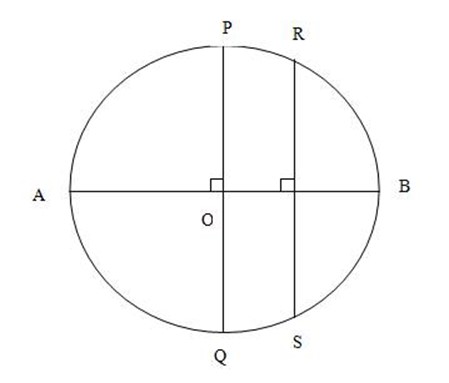
Aim: To prove that arc PR≡Are
Proof:
Arc AQ≡ Arc AP (AOB is diameter)
Arc AS≡ Arc AR (AOB is a diameter)
Arc PR ≡Arc AR – Arc AP and also
Arc QS≡ Arc AS – Arc AQ
By step (i) up to step (iii) above you can conclude that Arc PR≡ Arc QS proved
Class Activity:
Two chords, AB and CD of the circle whose radius is 13cm are equal and parallel.
If each is 12cm long, find the distance between them.
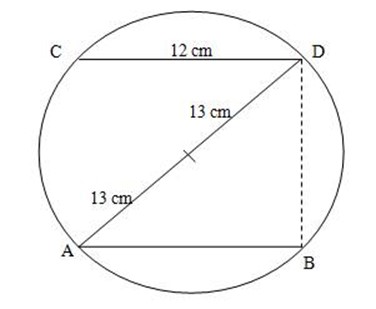
Soln: – By using Pythagoras theorem
AD2= AB2 +DB2
262 =122 + DB2
676 = 144 + DB2
DB2= 676 – 144
DB2 = 532
Square root both sides

2.A chord of length 32cm is at a distance of 12cm from the centre of a circle.
Find the radius of a circle.
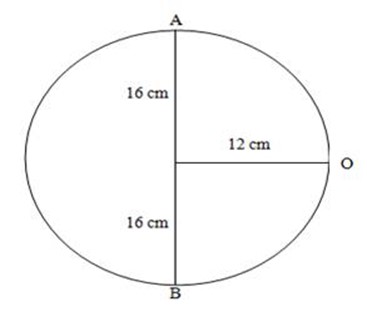
Soln:
By using Pythagoras theorem
AO2 = 122+ 162
= 144 + 256
= 400
Apply square root both sides

3. A distance of a chord PQ from the centre of a circle is 5cm.
If the radius of the circle is 13cm. Find the length of PQ
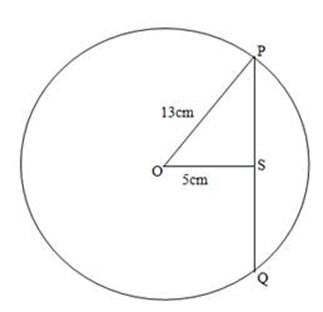
Soln:
By using Pythagoras theorem.
132 = 52 + PQ2
169 = 25 + PQ2
PQ2= 169 – 25
PQ2= 144
Apply square root both sides
PQ = 12cm
Since OS is perpendicular to PQ
Therefore PS = SQ
 PQ = 12cm + 12cm
PQ = 12cm + 12cm
= 24cm.
4. The chord AB of a circle with centre O radius 3cm long.
Find the distance of AB from O. give your answer in cm form
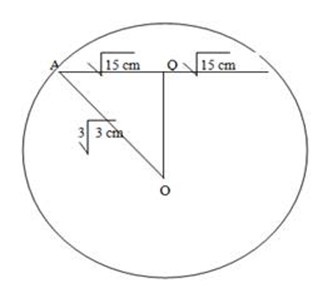
Soln:
By using Pythagoras theorem
a 2 +b2 =c2
15+b2 =9 x 3
b2 =27-15
Apply square root both sides
∴ 
5.Two chords AB and CD of a circle with centre O. if AB = 10cm,
CD = 6cm, AO = 7cm. Find the distance between two chords
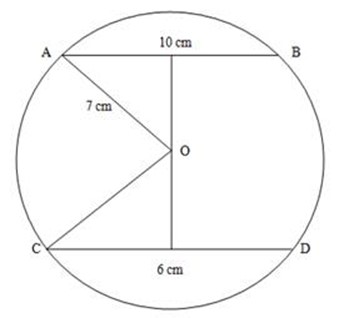
Triangle (i)
By Pythagoras theorem
a2 x 6 = C2
52 + b2 = 72
25 + b2 = 49
b2 = 49 – 25
b2 = 24

triangle (ii) by Pythagoras theorem
a2 + b2 = c2
32 + a2 = 72
9 +a2 = 49
a2 = 49 – 9
a2 = 40

Class Activity:
XY and PQ are parallel chords in a circle of centre O and radius 5cm.
If XY = 8cm and PQ = 4cm, find the distance between two chords.
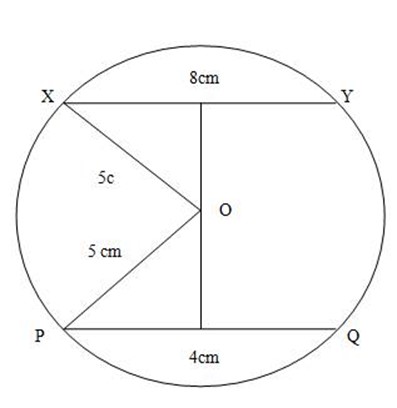
Soln:
1st triangle
By using Pythagoras theorem.
C2 = a2 + b2
52 = 42 + b2
25 = 16 + b2
b2 = 25 – 16
b2 = 9cm
square root both sides
b= 3cm
2nd triangle
By using Pythagoras theorem.
C2 = a2 + b2
52 = 22 + b2
25 = 4 + b2
b2 = 25 – 4

Example:
1. AB is a chord of circle with centre X. the midpoint of AB is m.
If XAB find MXA
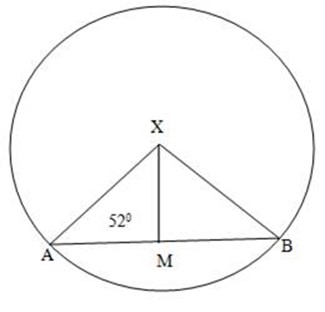
XAM + MXA = 180O
52o + 90o + MXA = 180o
MXA = 180o – 142º
= 38o
2. AB is a chord in a circle with centre C. the length of AB is 8cm and the
Radius of the circle is 5cm. find,
The shortest distance of AB from C
ACB
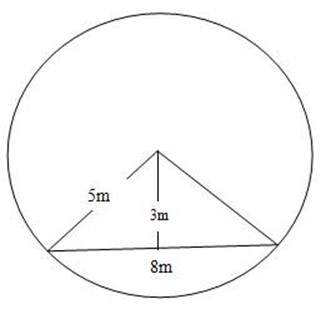
By applying Pythagoras theorem.
42 +mc2 = 52
Mc2 = 25 – 16
Mc2= 16
Square root both sides
Mc = 4m
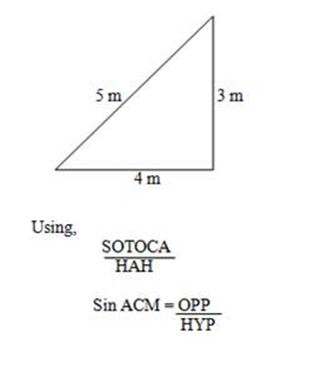
Sin ACM = 0.8000
ACM = Sin-1 ((0.8)
= 53o X 2
= 106o
A chord AB has length 12m. it is 7m from the centre of the circle.
Find the (a) length of AC
(b)ACB
Soln:
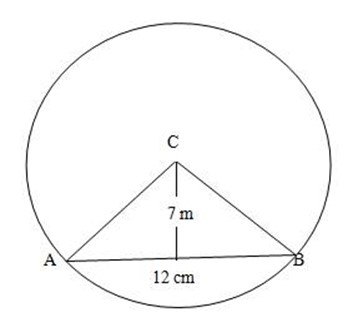
By using Pythagoras theorem.
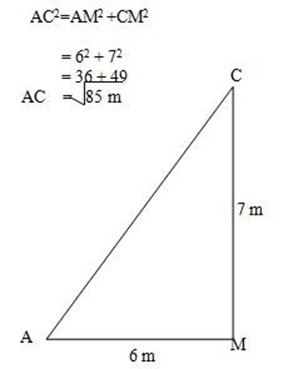
Using:


Tan ACM = 0.8571
ACM = Tan-1
= 40o
 ACB =400 x 2
ACB =400 x 2
= 80o
EXERCISE
1. M is the Centre at the chord AB at a Circle with centre X if

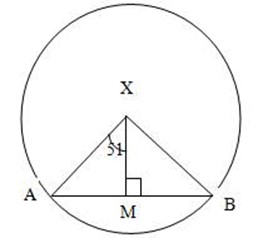
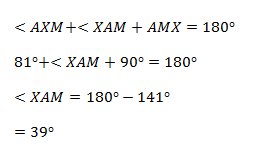
2. M is the centre at chord PQ at a circle with Centre O. if < PQO = 43O. Find
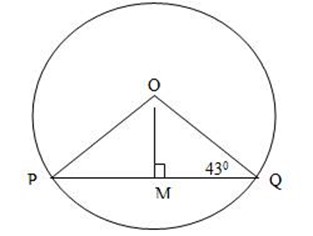
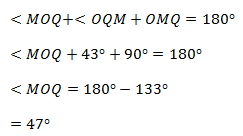
3. A circle has radius 13cm and centre X. a chord AB has length 24cm. find:-
(a) T distance of the chord from the Centre
(b) < AXB
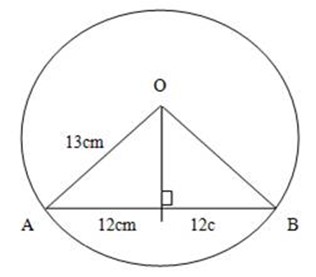
By Pythagoras theorem
(AM)2 + (MX)2 = (AX)2
122 + (MX)2 = 132
144 + (MX)2 = 169
(MX)= 169 – 144
(MX)2 = 25
Square root both sides
(MX)2 = 25
MX = 5cm
The distance from the centre to chord is 5cm.
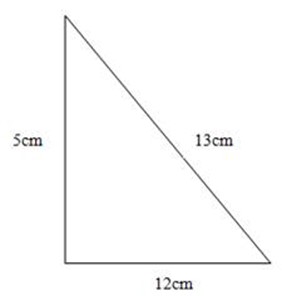
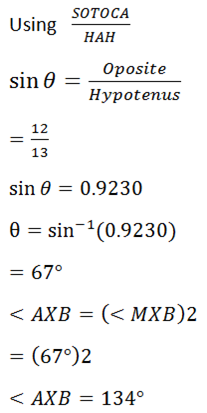
QUESTIONS:
1. Let A be the Centre at a chord PQ at a circle with Centre O. If < PQO = 43o, find < POQ
Soln
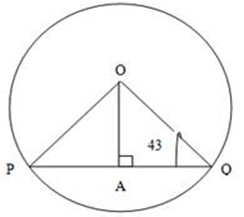
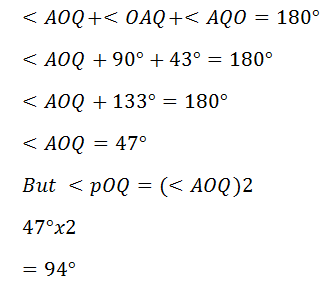
1. Q is the centre at a Circle and AB is a Chord
(a) The length at AB
(b) The distance at A from C
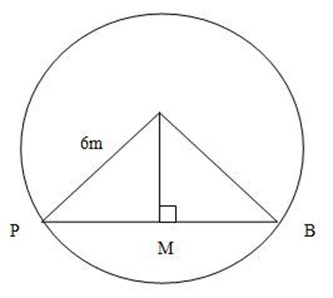
Soln:
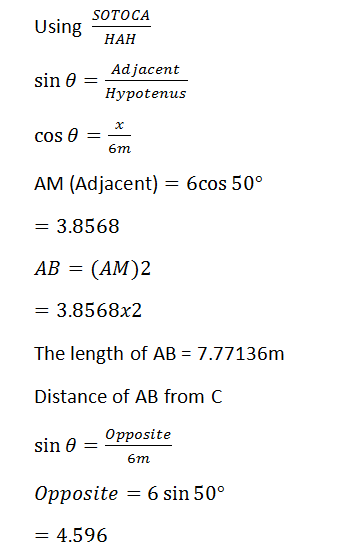

3. PQ is a Chord in a Circle with centre R. PQ = 14cm and the distance at R from PQ is 9cm, find:-
(a) The radius at a circle
(b) <PRQ
Soln:
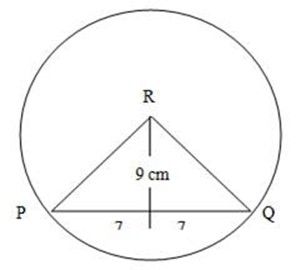
Let RQ = Radius
By using Pythagoras theorem
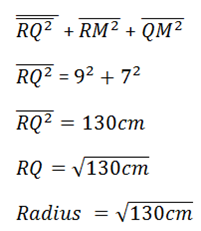
Using, SO TO CA
H A H
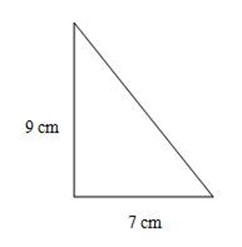

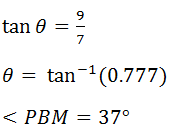
TANGENT PROPERTIES
A tangent to a circle touches it at exactly one point
THEOREM:
A tangent to a circle the line perpendicular to the radius at the point of contact.
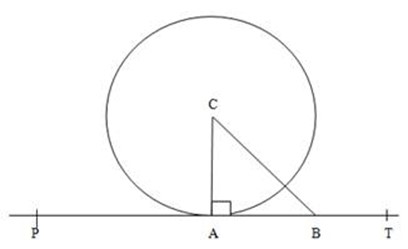
TAP is a line perpendicular to the radius CA show that TAP is a tangent as follows:-
If b is another point on TAP then CB is the hypotenuse at A CAB and hence CB is longer than CA it follows that B lies outside the Circle. Hence TAP needs the Circle only at A. TAP is a tangent to the Circle.
Hence a tangent is perpendicular to the radius.
Examples:
1. TA is a tangent to the Circle with centre C. If 
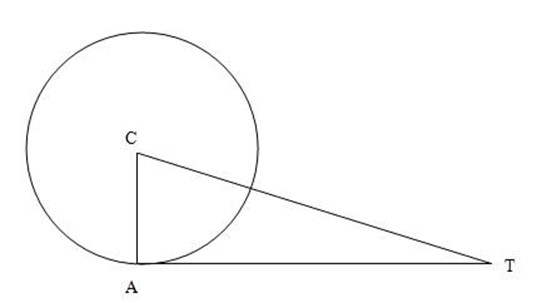
Line AT⊥AC = 90°
<CAT+<ACT +<ATC=180°
90° + 49° + <ATC =180°
139° + <ATC =180°
<ATC=180° – 139°
∴ <ATC = 41°
2. A point T is 8cm from the centre C of a circle of radius 5cm. Find
(a) The length of the tangent from T to the circle
(b) The angle between the tangent and TC
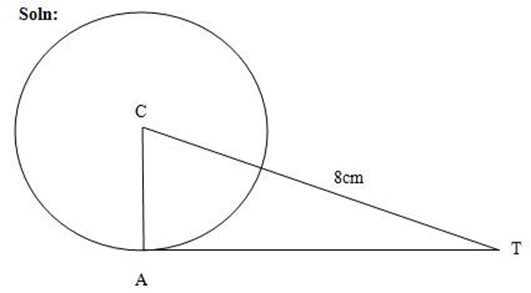
By using Pythagoras theorem
(AC)2 + (AT)2 = (TC)2
52 + (AT)2 = 82
25 + (AT)2 = 64
AT2 = 64 – 25
(AT)2 = 39
AT = 6.24


=39º
QUESTIONS:
1. TA is a tangent to the circle at A. the centre is C. if <CTA=32º
(a) Find <ACT
(b) If TC = 8cm, Find AT and radius of the circle
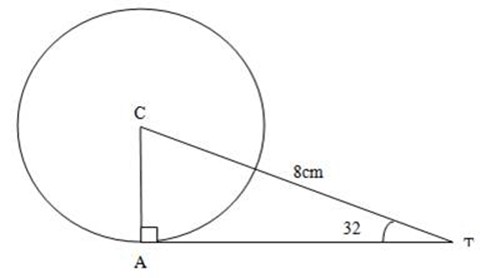
Solution: (a)
Line AT ⊥ AC = 900
<ACT +=1800
<ACT +900 + 32º =1800
<ACT= 1800– 1220
<ACT= 580
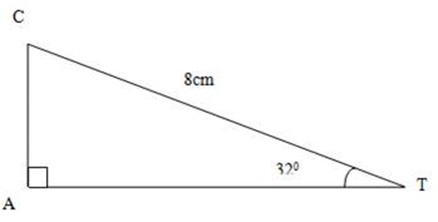
Solution: (b)
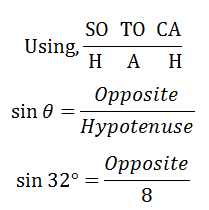
= 8 (0.5299)
AT = 4.2392cm
2.TA is a tangent to a circle at A. The centre at the circle C if angle ACT = 73°and radius of the circle is 2m. find:-
(a) <ATC
(b) TA and TC
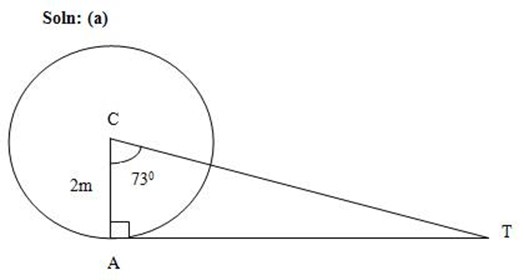
Line TA  AC = 900
AC = 900
<ATC+<ACT +<CAT=180°
90° + 73° + <ATC =180°
<ATC + 1630 = 1800
<ATC = 1800 – 1630
<ATC =17º
Solution: (b)
(i)
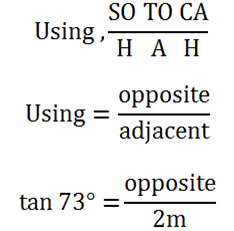
Opp = 2 Tan 730
=2(3.2709)
TA = 6.5418m
(ii) By using Pythagoras theorem
TA = 6.5418m
≈7m
C2 = a2 + b2
= 22 + 72
= 4+49
c2= 53
Square root both sides
C2 = 53

3. A point T is 6m form the center C of a circle radius 3cm. Find:-
(a)The length of Tangent from T to the circle
(b)The angle between the tangent and TC
Solution: (a)
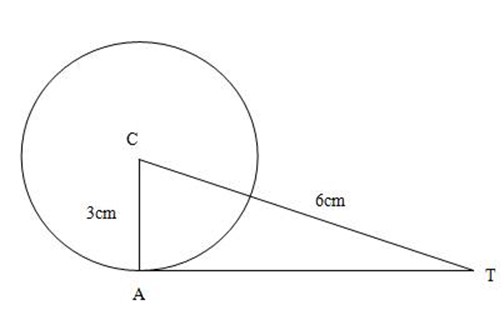
Using Pythagoras theorem
A2 + b2 =C2
32 + b2 = 62
9 + b2 = 36
b2 = 36 – 9
b2 = 27
Square root both sides
b2 = 27

Solution: (b)
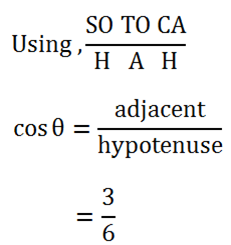
Cos = 0.5
= Cos -1 (0.5)
= 300
Angel between tangent and TC is 300
Class Activity
1.A point, 10m from the center X of circle at radius 6m. A tangent is drawn from P to the circle touching at A. Find the length of the tangent from P to the circle.
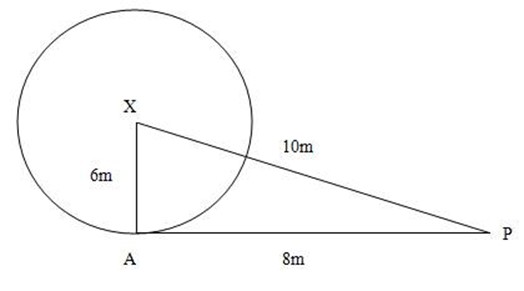
By using Pythagoras theorem
C2 = a2 + b2
102 = 62 + b2
100 = 36 + b2
b2 = 100 – 36
b2 = 64
Square root both sides
b2 = 64
b = 8m
∴The length of the tangent from P to the circle is 8m
2.A tangent is drawn from T to a circle of radius 8cm. The length of the tangent is 4cm. Find,
(a) The distance of T from the Centre C of the circle
(b) The angle between TC and the tangent
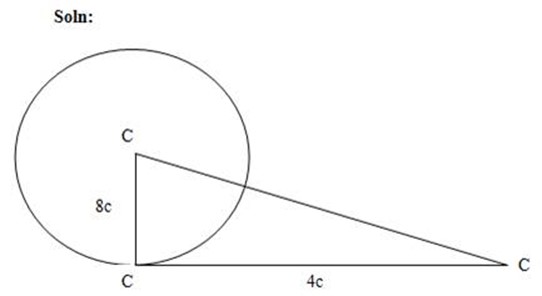
(a) By using Pythagoras theorem
C2 = a2 + b2
= 82 + 42
= 64 + 16
= 80
Square root both sides
C2 = 80

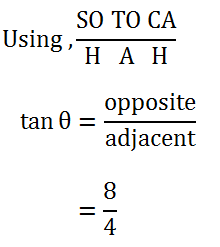
θ = tan-1 (2)
= 60
the angle between TC and tangent is 63º
TANGENT FROM A POINT
Suppose T is outside a circle there are two tangent from T to the circle and they are equal in length
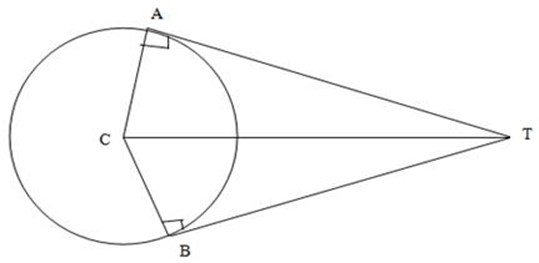
Proof:
Consider the angle TCA and TCB
CA = CB (Both are radii)
TC = TC (Common)
<TAC=<TBC
CHORD AND TANGENT
Suppose the chord CD gets shorter and shorter is that C and D approach a common point E then the chord CD becomes the tangent at E, by interesting chord theorem.
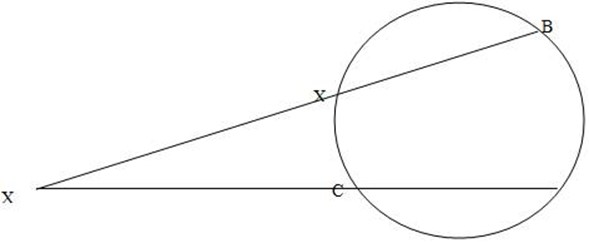
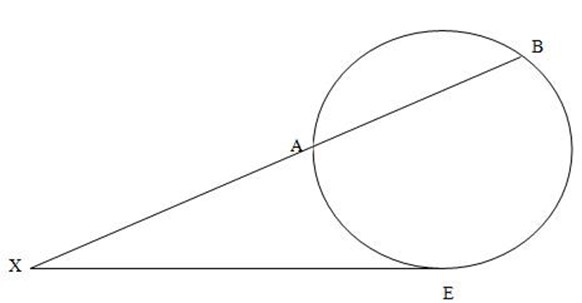
XA x XB = AC x XD
XA x XB = XE x XE
XA x XB = (XE)2
Example
1.TX is a tangent to a circle. The line TAB cuts the circle at A and B with TA = 3cm and AB = 9cm. Find TX
Solution:
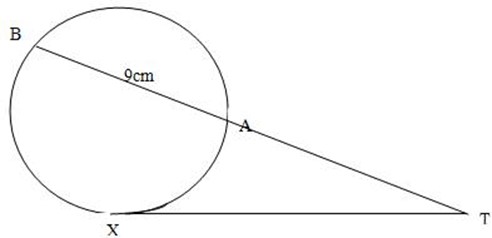
(TA) (TB) = TX x TX
(TA) (TB) = (TX)2
Since, TB = (TA) + (AB)
= 3cm + 9cm
= 12cm
From the theorem
(TA) (TB) = (TX)2
3cm x 12cm = (TX)2
Square root both sides
36cm2 = (TX)2
TX = ± 6cm
Since there is no -ve dimension therefore TX is 6cm
More Examples:
Find the length of unknown in the diagram.
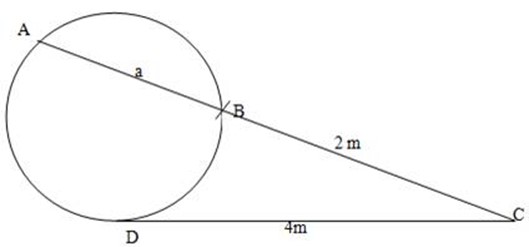
Solution:
(CB) (CA) = (DC) (DC)
(CB) (CA) = (DC)2
Since CA = (CB) + (AB)
= 2m + a
From the theorem.
(CB) (CA) = (DC)2
(2m) (2m +a) = (4m)2
4m2 + 2ma = 16m2
2ma = 16m2 – 4m2
2ma = 12m2
a = 6m
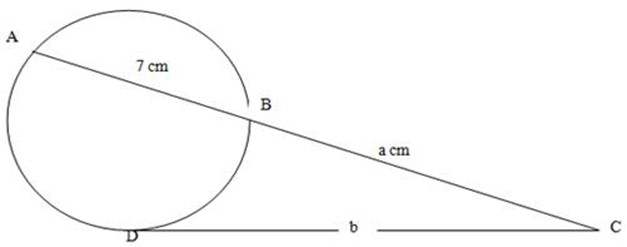
Solution:
(CB) (CA) = (CD)2
Since CA = (CB) + (AB)
= 9m + 7m
= 16
From the theorem
(CB) (CA) = (CD)2
(9m) (16m) = (b)2
Square root both sides
144m2 = b2
b = ±12m
Since there is no -ve dimension b= 12m
2.TC is a tangent to a circle and Tab cuts at AB and B. if TA = 2cm and TB = 8cm, find TC
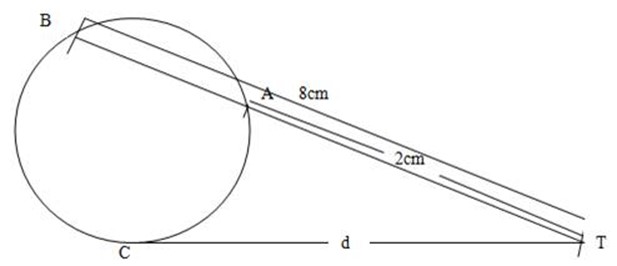
Soln:
From the theorem
(TA) (TB) = (TC)2
2cm x 8cm = (TC)2
16cm2 = (TC)2
Square root both sides
16cm2 = (TC)2
TC = 4cm
3. TX is a tangent to a circle and TYZ cuts the circle and Y and Z. if TX= 10m and TY = 4m. Find TZ
Solution:
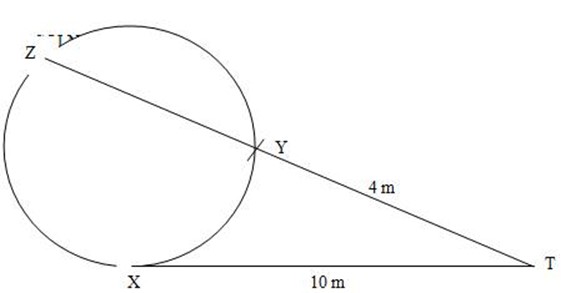
(TY) (TZ) = (TX)2
Let ZY = y
Since TZ = TY + ZY
= 4m + y
From the theorem
(TY) (TZ) = (TX)2
(4m) (4m + y) = (10m)2
16m2 + 4my = 100m2
4my = 100m2 – 16m2
4my = 84m2
Y = 21m
Since ZY = y
TZ = TY + ZY
= 4m + 21m
= 25m
Class Activity
1.TA is a tangent to a circle and TBC meets the circle at B and C. TA = (9cm and BC = 24cm). Find TB
Solution:
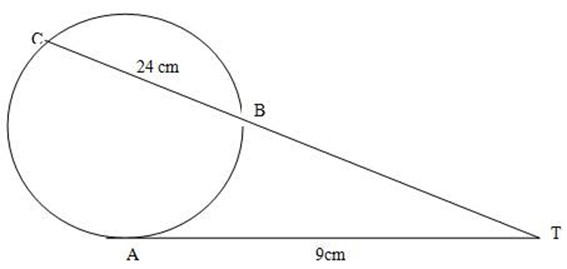
(TB) (TC) = (TA)2
Let (TB) = y
Since TC = TB + CB
= y + 24cm
From the theorem
(TB) (TC) = (TA)2
(y) (y+ 24cm) = (9cm)2
Y2 + 24cmy = 81cm2
Y2 + 24cmy – 81cm2 = 0
By using General formula
Where a = 1, b = 24, c = 81
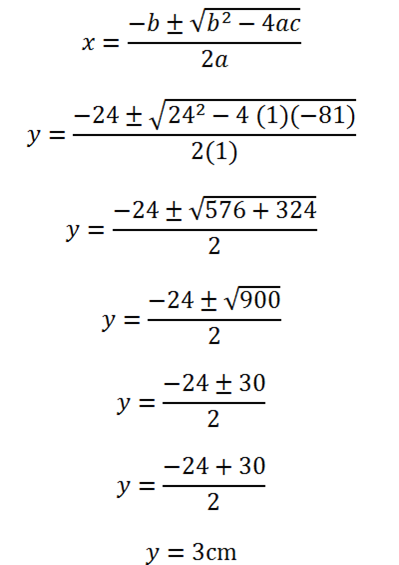
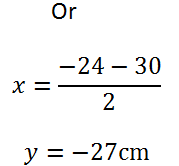
Since there is no negative dimension, the length at TB is 3cm
2.TX is a tangent to a circle and TPQ meets the circle at P and Q. TX = 12cm and PQ = 7cm, find TP
Solution:
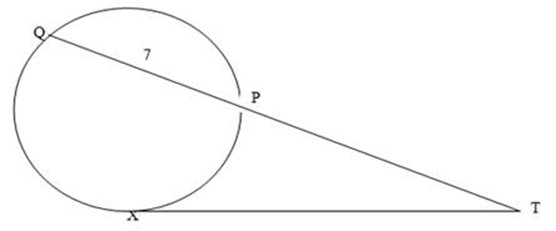
(TP) (TQ) = (TX)2
Let (TP) = Z
Since TQ = TP + QP
= Z + 7cm
From the theorem
(TP) (TQ) = (TX)2
(z) (z +7cm) = (12cm)2
z2 + 7z = 144
z2 + 7z – 144 = 0
By using the general formula
Where a = 1, b = 7 and c = -144
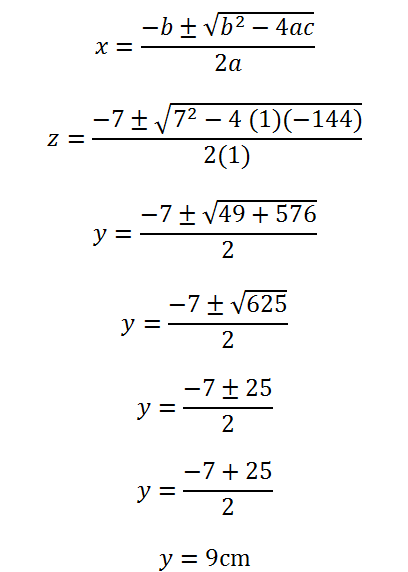
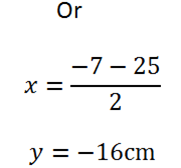
Since there is no negative dimension, the length at TP is 9cm
3.AB is a chord at a circle at length 5cm. C is another point on the circle. AB extended on the circle meets the tangents at C and T. if the TC = 6cm, find the possible value of TB.
Solution:
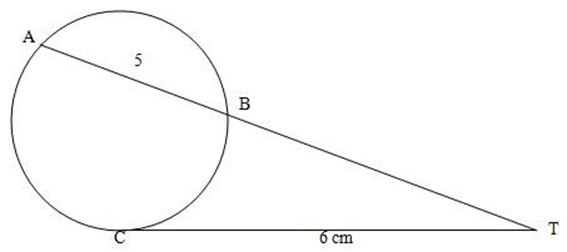
(TB) (TA) = (TC)2
Let
(TB) = x
Since TA = TB + AB
= x + 5cm
From the theorem
(TB) (TA) = (TC)2
(x) (x + 5) = (6cm)2
X2 = 5x = 36
X2 + 5x – 36 = 0
By completing the square
X2 + 5x – 36 = 0
X2 + 5x – 36 = 0
X2 + 5x = 36
Add (½ b) 2 both sides
X2 + 5x + (½ x 5) = 36 + (½ x 5)2
X2 + (5/2)2 = 36 + 25/4
(x + 5/2)2 = 169/4
Square root both sides
(x + 5/2)2 = ±169/4
X + 5/2 = ± 13/2
X = -5/2 ± 13/2
= -5/2 + 13/2
= 4cm
Or
X = -5/2 – 13/2
= -9cm
Since there is no negative dimension, the length of TB is 4cm.
4. XY is a chord of a circle at length 2cm. z is another point on the circle. XY extended meets the length at z at T. if TX = 18cm, find the possible value of TZ
Solution:
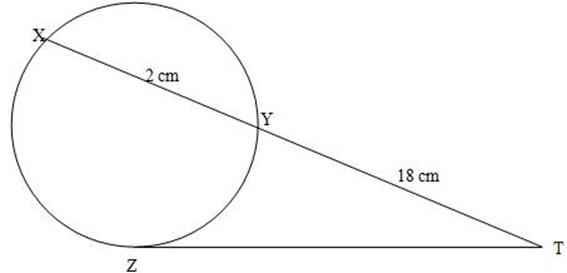
(TY) (TX) = (TZ)2
Since TX = TY + XY
18cm + 2cm= 20cm
From the theorem
(TY) (TX) = (TZ)2
(18cm) (20cm) = (TZ)2
360cm2 = (TZ)2 square root both sides
(TZ) 2 = 360cm2

ALTERNATE SEGMENT THEOREM
AT is a tangent to the circle and AB is a chord. The alternate segment theorem state that:-
THEOREM: The angle between the chord and tangent is equal to the angle in the alternate (others)
Segment i.e. < TAB = <ACB
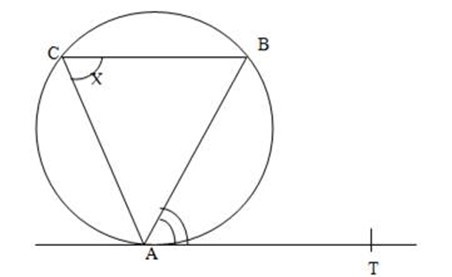
Proof:
< TAB = <ACB
Aim: Is proving that <ACB= <BAT
Let ACB = X and Centre of a Circle to be
‘O’ AOB = 2x (< at the centre is twice the angle at the circumference).
AC,BC, and AB or chords in the Circle and AO = OB
∴Δ AOB is isosceles triangle since AO and OB are equal
<OAB=1/2(180º – 2x)
= 900 – x
<BAT+ <OAB =<OAT
<BAT=<OAT – <OAB
=90° – (90° – x)
= 900-900 +x
=0+x
∴<BAT=x
hence proved
∴<ACB=<BAT
=x
QUESTIONS:
1.ABCD is a cyclic quadrilateral TA is the tangent to the Circle at A. if <TAC = 73º, find <ABC
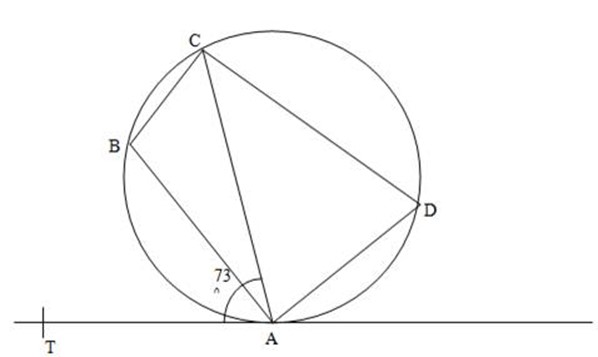
Solution:
TAC = 730
Angle at the same segment equal
TAC = ADC
<ADC + 730 = 1800
Take out 730 both sides
<ABC = 1800 – 730
<ABC=107º
2. PQRS is a cyclic quadrilateral. ST is the tangent to the Circle at S. if <QRS = 132º.Find <RST
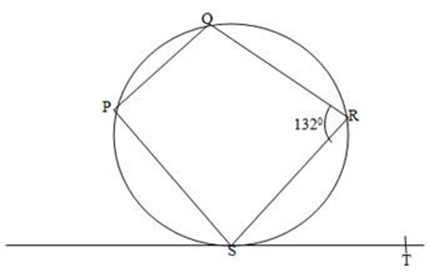
Soln:
<QRS +<RST =180º
1320 +1320=180º
Take out 1320 both sides
<RST =180º-1320
=48º
3. C is the centre of the Circle. If <BAT=39º. find <ACB.
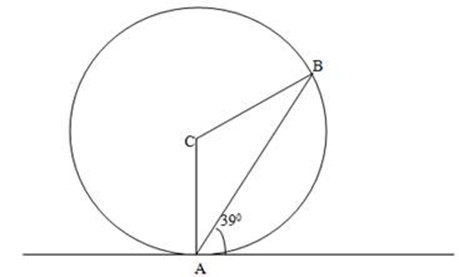
Soln:
Angle at the Centre is twice the angle at circumstances
<ACB = <BAT
39º=<BAT
<ACB x 2=< ABC
< ABC=39º x 2
=78º
4.X is the Centre of the Circle if<CXD =88º, find <TCD
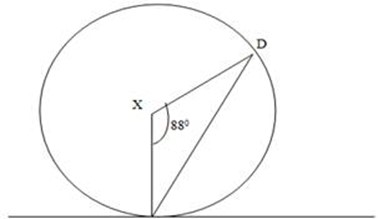
Soln:
<DXC=<DCT/2
Angle at the Centre is twice the angle at the circumstances.
∴<TCD=88º/2
= 44º
THE EARTH AS A SPHERE
SPHERE
Is a set of a point which equidistance (equal distance) from the fixed point called the centre of the Sphere.
-The distance from the centre of the sphere to any point at the circumference of the sphere called Radius at the earth which is approximately as 6370km.
-The surface of the earth is not exactly spherical because it is flattened in its northern and southern pole or we say. The earth is not perfect sphere, as it is slightly flatter at the north and southern pole than at the equator. But for most purpose we assume that it is a sphere
